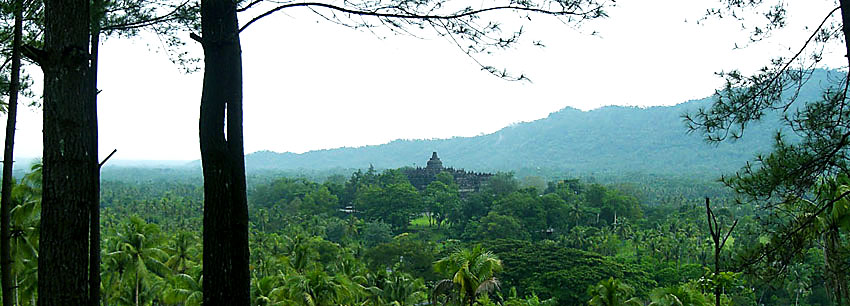 | ||
Kedu Plain, also known as Progo River valley, is the fertile volcanic plain that lies between the volcanoes, Mount Sumbing and Mount Sundoro to the west, and Mount Merbabu and Mount Merapi to the east of Central Java, Indonesia.
The plain also borders the Menoreh hills in the southwest and Prambanan Plain in the southeast. The Progo River runs through the center of this plain, from its source on the slope of Mount Sumbing to the southern coast of Java facing the Indian Ocean. It has been a significant location in Central Javanese history for over a millennium, as it contains traces of the Sailendra dynasty as well as Borobudur and associated locations. During colonial Dutch East Indies period, the Kedu Plain belonged within the Kedu residency administration. Today Kedu residency consists of the Magelang Regency, Magelang City, and Temanggung Regency administrative units.
When Britain colonized the region in the 18th century, Magelang became the seat of government. After the Napoleonic wars ended, the English turned Java back over to the Dutch in 1816 and Magelang continued to play a central role in the Dutch East Indies.
There is a small hill near Magelang called Mount Tidar that is referred to as the Nail of Java. According to Javanese legend, the gods placed the nail to prevent the island of Java from sinking into the sea from tremors.
Archaeological sites
The Kedu Plain hosts a large number of Hindu and Buddhist temples dated, from the 8th to the 9th century. Because of this, the Kedu Plain is considered the cradle of classic Indonesian civilization. The temples in the region include:
